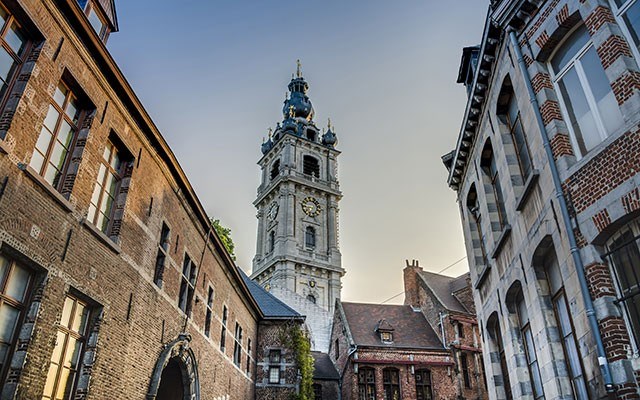Can culture pave the road to prosperity? The people of Belgium think so and are investing 68 million Euros — that's almost $100 million — to help their city of Mons rise to the challenge of being Cultural Capital of Europe for 2015.
Canadians better know Mons as the place where British troops fought their first major battle of the First World War and where the Canadian Corp. fought its last battle at war's end. Memorial tourism has helped the local economy since those devastating wars, but unemployment in the region is one of the highest in the country, approaching 40 per cent. Mons is counting on culture.
This medieval city built on a hill has been digging into its past to live up to its not insignificant moniker for 2015. Renaissance greats are being revived, including Orlando de Lasso, a prolific composer who was as comfortable writing drinking ditties as religious scores, and sculptor and architect Jacques Du Broeucq, whose alabaster statuary adorns the interior of Mons' magnificent church of St. Waudru.
Architecturally significant buildings, such as the city's unique baroque belfry, are being renovated and restored. And come 2015, an avalanche of art and exhibitions will fill five new museums and spill onto the city's newly re-cobblestoned streets.
To welcome visitors, a futuristic new railway station is being built, designed by Santiago Calatrava, the same architect responsible for the new World Trade Center Transportation Hub in NYC (The budget for the train station and other infrastructure for 2015 is over and above the 68 million Euros).
But perhaps the biggest draw in 2015 is none other than Vincent Van Gogh. The man who would become one of the greatest names in art spent almost two years near Mons, years that influenced his later work as an artist and even propelled him to become one.
In a little-known chapter of his life, Van Gogh came to the coal-mining area known as the Borinage in 1878 to work as a pastor. He was passionate about helping the poor and sharing the gospel, even to the point of giving away his clothes and dressing in rags. But when his six-month contract wasn't renewed — church leaders found his behaviour bizarre — he turned to art.
A new exhibit, Van Gogh in the Borinage: The Birth of an Artist, runs from Jan. 25 to May 17 at Mons' Musée des Beaux-Arts and includes some 70 paintings from various international collections, as well as seven original and rarely loaned letters from the artist.
When I visited Mons in October for a preview, I toured Van Gogh's old neighbourhood with a local historian who leads walking tours. I peered inside one of his former homes — a humble red brick row house that's being restored for use as an artist's retreat — and cringed when told that the drawings he made here each evening were used to start the fire the next morning.
I stood over the Marcasse mineshaft where he descended 700 metres underground so he could better understand the dangerous and dirty lives of miners. And I looked out on the freshly plowed fields and the enormous slag heaps left behind by coal mining, now covered in trees, where Van Gogh would help pregnant women dig out small chunks of coal to take home to burn.
It's a surprisingly gentle landscape, considering the 1,200 or so shafts drilled into the earth here during the Industrial Revolution. Despite his difficult work, Van Gogh enjoyed his new environment. In a letter to his brother Theo on Boxing Day, 1878, he wrote: "I cannot tell you how picturesque the hilly countryside looks in the thaw, now that the snow is melting and the black fields with the green of the winter wheat are again becoming visible."
Finally, I visited another former coal mine that Van Gogh would have been familiar with — the Grand Hornu. Aside from his later art, this is where coal and culture come together like nowhere else. Grand Hornu was one of the largest mines in Belgium at the height of the Industrial Revolution. Its stunning neo-classical design and freshly scrubbed brick oval suggest little of its dirty past. Today it's a UNESCO World Heritage Site and home of the Museum of Contemporary Arts and the new Centre for Innovation and Design.
From coal to culture, Mons is quite a trip, both in time and place.
For more information, visit www.mons2015.eu/en




